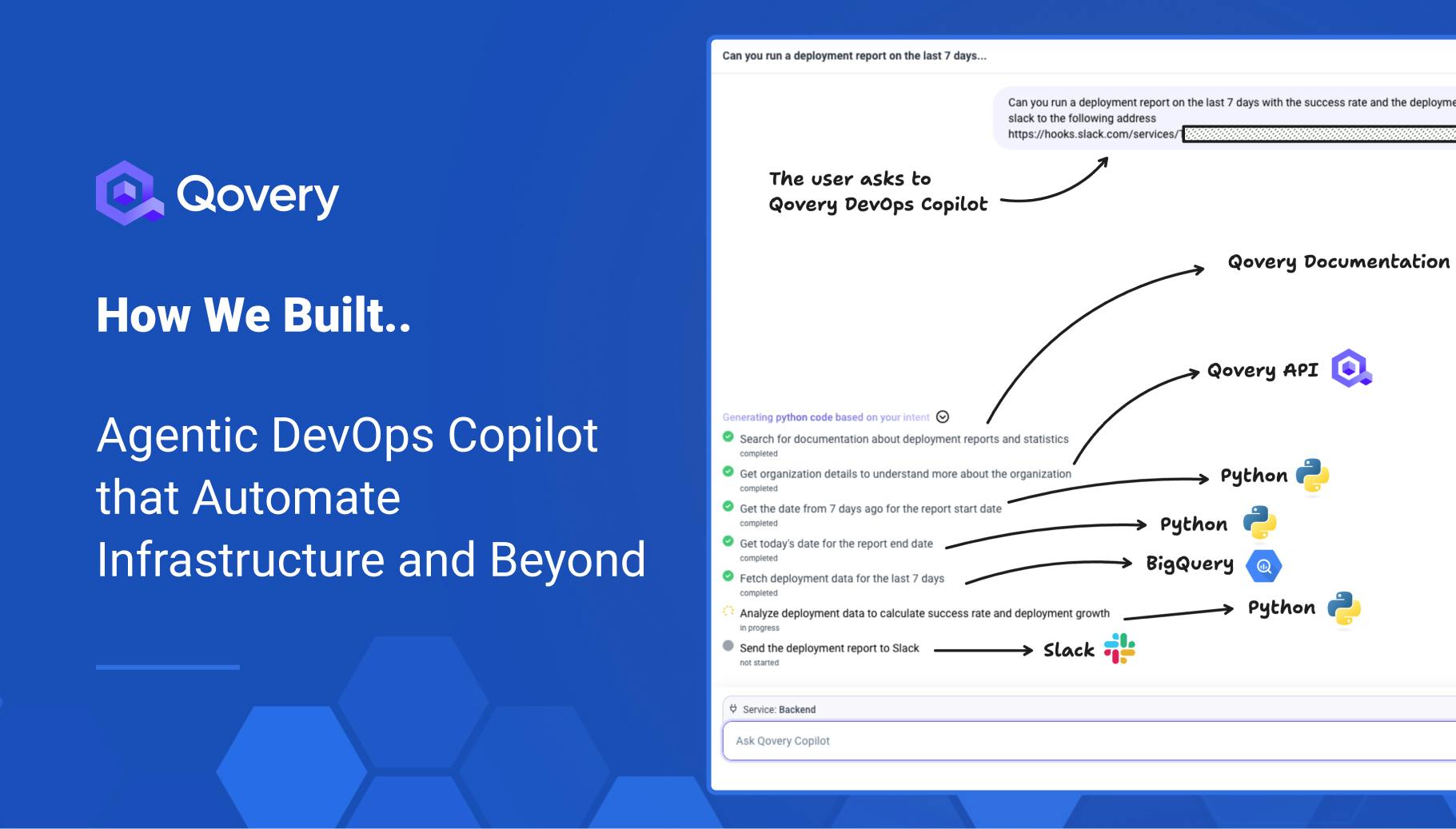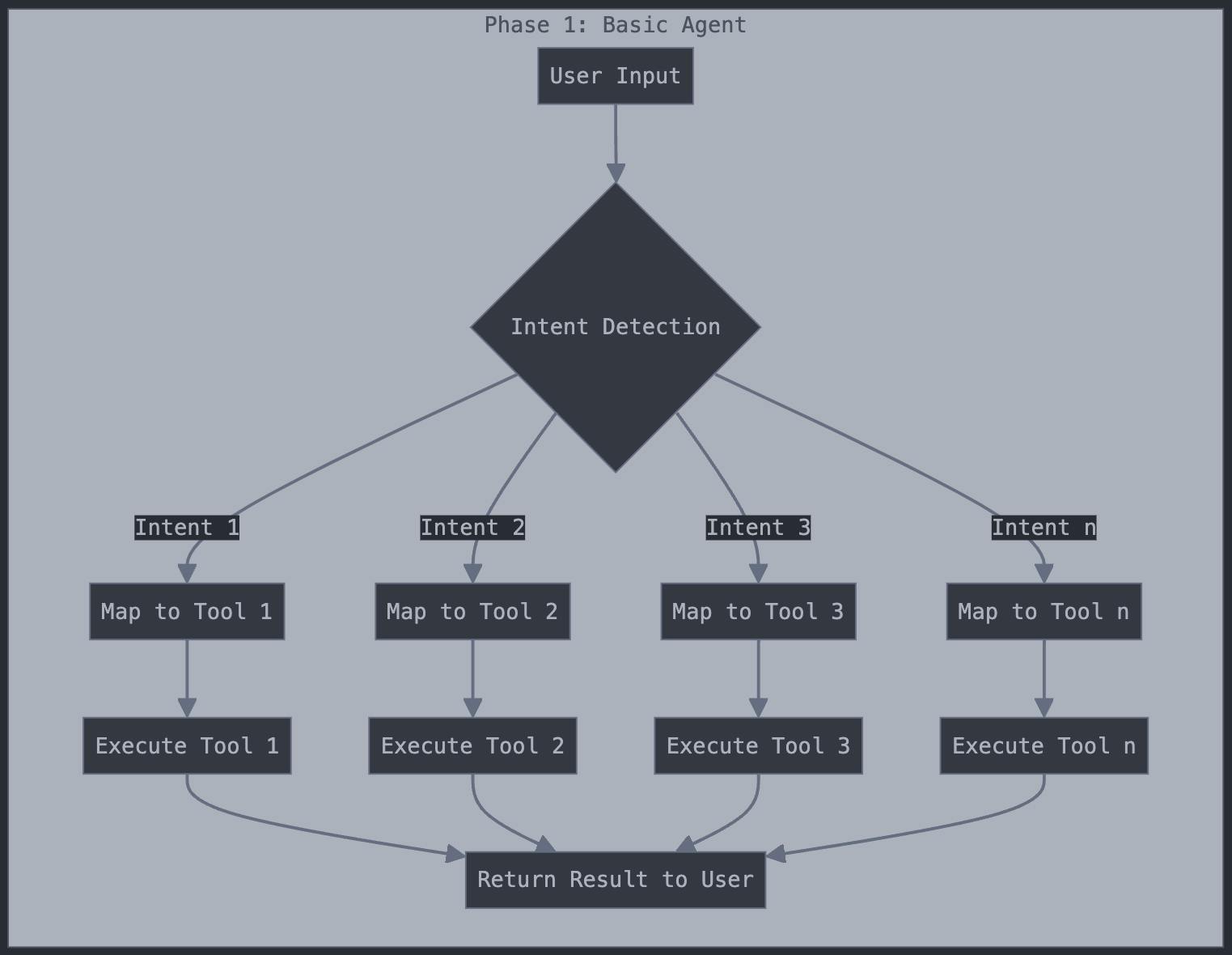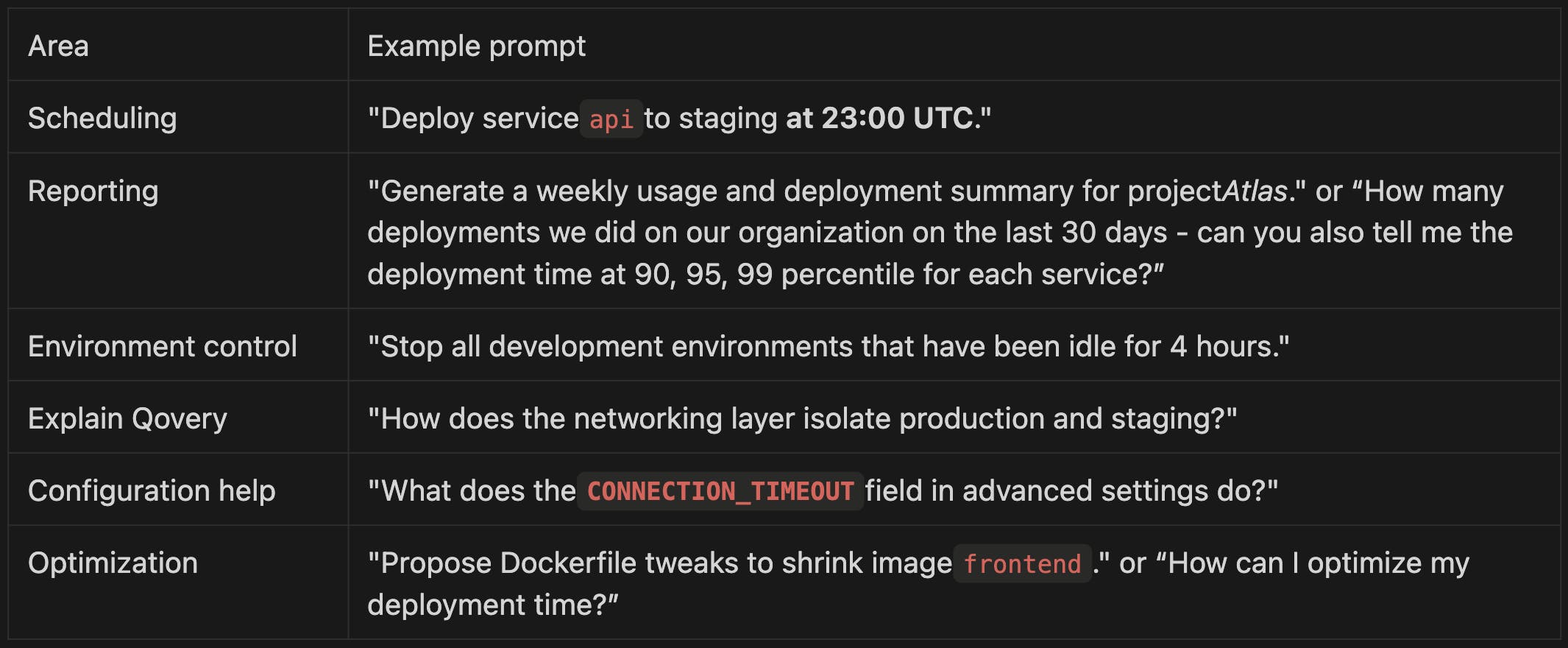How We Built an Agentic DevOps Copilot to Automate Infrastructure Tasks and Beyond
At Qovery, our goal is simple: eliminate the grunt work of DevOps. The idea of an assistant that can understand developer intent and autonomously take action on infrastructure has always felt like the holy grail. In February 2025, we started building that assistant - our DevOps Copilot.
Today, our Agentic DevOps Copilot is live in Alpha. It helps developers automate deployments, optimize infrastructure, and answer advanced configuration questions. But getting here took multiple iterations. Here’s a look at the 4 technical phases that shaped its design and reliability.

Romaric Philogène
May 21, 2025 · 4 min read
If you are curious to see our Agentic DevOps Copilot in action, here are a few short demo videos:
- DevOps Copilot computes the deployment success rate
- DevOps Copilot generates a CISO report for the last week
- DevOps Copilot prevents modifying resources (read-only mode)
#Phase 1: The Basic Agent
We started with a simple agent architecture: detect a user’s intent, and map that intent to a tool or action.

For example:
“Stop all dev environments after 6pm” → matches the stop-env tool
Each intent had its own mapping logic, and tools were invoked accordingly.
✅ Pros:
- Easy to implement
- Predictable behavior
- Clear control over each action
❌ Cons:
- Every new intent had to be hardcoded
- Complex workflows required chaining tools manually
- No flexibility for unexpected or unplanned user requests
This version served well for a few internal use cases. But the moment real users started asking real questions — like "How can I optimize my Dockerfile?" or "Why is my deployment time high this week?" — we hit a wall. We needed something more flexible.
#Phase 2: Going Agentic
The second phase was a real leap: we designed an Agentic system.

Instead of hardcoded intent-to-tool mapping, the DevOps Copilot receives user input, analyzes it, and dynamically plans a sequence of tool invocations to fulfill the request. Think of it as having a toolbox and letting the AI figure out how to use the tools in the right order.
Each tool:
- Has a clear interface (input/output)
- Is versioned and stateless
- Can be independently tested and improved
Benefits:
- Far more scalable and flexible
- Can solve unanticipated user needs
- Encourages clean tool abstraction

Challenges:
- Tool chaining is fragile - outputs must match expected inputs
- If one tool fails or behaves unexpectedly, the whole plan breaks
That’s when we realized: a dynamic system needs to be able to fail gracefully and recover. That took us to phase three.
#Phase 3: Resilience and Recovery
We added resiliency layers and robust retry logic into the agentic execution flow.
Now, if the agent misuses a tool or the tool returns an unexpected output, the system:
- Analyzes the failure
- Updates its plan or fixes the step
- Retries with a corrected approach
This required tracking intermediate state, running validation between tool steps, and allowing re-planning if an execution fails.
Without this, reliability drops fast. With it, we started seeing successful completions of multi-step workflows that weren’t even anticipated during development.
#Phase 4: Agentic + Memory
At this point, the Agentic Copilot could dynamically respond and recover from errors, but each request was treated in isolation.


That’s not how humans work. If I ask a follow-up question like:
“What about the staging cluster?”
… it should relate to my previous question about the production cluster. But it didn’t.
So we introduced conversation memory. It allows the Agentic DevOps Copilot to:
- Reuse previous answers
- Understand references and context
- Maintain continuity across a session
This drastically improved user experience - and opened the door to deeper, multi-step optimization and monitoring tasks.
#What's Next
The Agentic DevOps Copilot is just getting started. We’re exploring:
- Improving the speed of planning: It can take up to 10 seconds to plan complex tasks, which is ok in a testing phase, but not so great for production.
- Self-hosted models: We use Claude Sonnet 3.7 right now, and even if we don't send sensitive information, we are a business solution and want to let our users use models that fit their compliance standards.
- Long-term memory across sessions: to tailor the experience to each user and learn from the previous experience.
We’re not building another chatbot. We’re building DevOps automation with a brain - so your team can focus on building products, not managing infrastructure.
#Want to try it?
Our Copilot is in Alpha. You can ask it:
- “Generate usage stats over the last 30 days for team X.”
- “Optimize this Dockerfile.”
- “Stop all environments inactive for 6h and notify the team.”
If you’re a Qovery user and want early access, check the Slack message in your workspace or contact us directly.
--
Learn more about how we use QDrant - a super powerful open-source Vector Database
Your Favorite DevOps Automation Platform
Qovery is a DevOps Automation Platform Helping 200+ Organizations To Ship Faster and Eliminate DevOps Hiring Needs,
Try it out now!

Your Favorite DevOps Automation Platform
Qovery is a DevOps Automation Platform Helping 200+ Organizations To Ship Faster and Eliminate DevOps Hiring Needs,
Try it out now!


